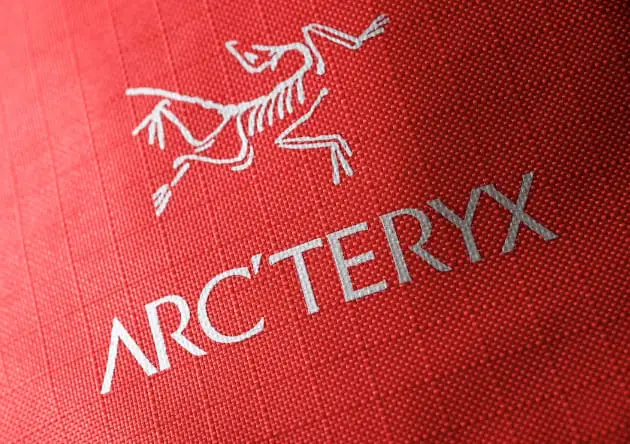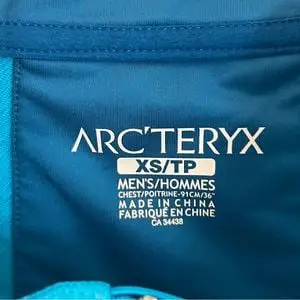As an outdoor enthusiast, knowing exactly which Arcteryx jacket is in your gear closet can be invaluable. With their innovative designs and reputation for quality, Arcteryx outerwear doesn’t come cheap. Identifying your specific jacket model allows you to learn about its intended use, proper care and maintenance, as well as resale value if you ever decide to part with it.
Luckily, there are a few simple ways to discern what Arcteryx jacket you own. In this comprehensive guide, we’ll walk through techniques to examine the physical jacket itself, study the logo and branding elements, and decode the product tags and labels. We’ll also overview the signature features of popular Arcteryx jacket models so you know what to look for.
How to Tell What Arcteryx Jacket You Have
Follow these tips and you’ll be able to confidently determine which prestigious Arcteryx outer layer is in your possession.

Comparing the Design and Construction
One of the best ways to identify an Arcteryx jacket is to simply study its design and construction. Arcteryx is known for using innovative techniques and smart designs optimized for athletic activities.
Pay attention to elements like the jacket’s silhouette, length, hood design, cuff construction, and fabric use. Compare it against photos of different Arcteryx jacket models to see if you can find a match.
For example, the iconic Alpha SV features an athletic fit, helmet compatible StormHoodTM, and a gusseted underarm design ideal for climbing and alpine use. The Beta AR jacket has a streamlined silhouette optimized for all-around technical activities in rough conditions.
Look for signature Arcteryx details like laminated brims on hoods to retain structure, cuff drawcords, harnesses for tool carry, and strategically-placed pockets. The careful construction of an Arcteryx jacket makes it stand out from other outdoor brands.
Studying the jacket’s fabric and insulation can also provide clues. Check if the shell fabric is smooth and shiny, indicating N80p-X Gore-Tex Pro. Or feel for a soft, matte face fabric signalling use of durable AC2 materials.
Down insulation, synthetic CoreloftTM, or air-permeable fleece lining is another telling sign. Arcteryx ingeniously tailors insulation types and placement to the jacket’s intended activity.
Examining the Logo and Branding

In addition to the jacket itself, closely inspecting the external branding elements can reveal what specific Arcteryx model you have.
Check the main chest logo. Their distinctive stylized bird logo should be present, unless it’s an older model. Look for small details within the logo – the bird’s head may face left or right depending on the jacket type.
Subtle branding text will also likely appear near the logo, such as “Arc’teryx” and the specific jacket name. For example, a Cerium LT down jacket may have “Cerium LT” etched on the chest.
Other external labels to examine are sleeve logos, hang tags, bottom hem tags, or top back prints. While mimicked by counterfeits, authentic Arcteryx branding uses consistent stylization, fonts, and locations on jackets.
If the main logo is worn away, pinpoint branding on zipper pulls, cord adjusters, or buttons. The miniature bird icons and engraved “Arcteryx” text on the hardware is an identifiers.
You may also spot entire words like “Waterproof” printed along zippers or Velcro storm flaps. This indicates use of durable Gore-Tex fabric in waterproof Arcteryx hard shells.
Checking the Label and Tags

When the jacket itself and external branding don’t provide enough clues, it’s time to investigate the labels and tags inside the jacket.
First, locate the main fabric tag, typically found behind the inner neck label along the back collar. This will contain the full jacket name alongside a product code that starts with “AR” for Arcteryx, then the jacket type and numbers.
For instance, the Zeta AR rain jacket has the tag name “ZETA AR JACKET” with product code “AR394”. Entering this code into Arcteryx’s Product Identification Tool will definitively identify the jacket.
Other helpful tags to check are the washing instruction tag and the content tag listing materials. Matching these up with care instructions and shell/lining fabrics for specific jackets can help provide confirmation.
Counterfeit Arcteryx jackets often use the wrong fabrics and codes, so authentic tags are a quick giveaway. When torn or missing, contact Arcteryx with the product code from an internal tag for verification.
What are the Features and Characteristics of Different Arcteryx Jacket Models?
Familiarizing yourself with the unique signatures of Arcteryx’s most popular jacket models makes identifying your own jacket easier. Here’s a quick overview of what defines some of their bestselling designs:
Alpha SV – Arcteryx’s premier climbing and alpine jacket. Features like the helmet compatible DropHoodTM, dual interior pockets, and hybrid cuff design make this jacket perfect for severe mountain conditions. It’s athletic climbing fit along with micro-seam allowance construction set it apart.
Beta AR – A versatile technical jacket designed for all-around outdoor use. It’s streamlined for moving fast in the mountains, with light insulation and moisture protection. Identifying features are the one-handed drawcord hem adjustments and laminated brims on the StormHoodTM.
Atom LT – This synthetic insulated jacket is a bestseller for its light warmth and breathability. Elasticized cuffs, side panels, and hybrid mapping of insulation characterize the Atom LT. It works as a standalone jacket or as a mid-layer under a shell.
Theta AR – Built for colder weather activities, the Theta AR down jacket has features like an internal stuff pocket, hybrid down mapping, and 700-fill European goose down. It provides maximum warmth with minimal weight.
Zeta LT – A lightweight three-layer waterproof jacket made for fast and light alpine pursuits. The Zeta LT is packed with features like a DualHaloTM hood, watertight Vislon front zipper, and Slide‘N LocTM cord adjustment system.
Cerium LT – Extremely compressible yet warm, the Cerium LT down jacket is perfect for cold weather adventures. Key features are the Down Composite Mapping and Dual Interior pockets. This 850-fill power-down jacket packs down small and can be layered or worn standalone.
Tips for Verifying Your Arcteryx Jacket Authenticity
With counterfeit outerwear being common, it’s worth taking steps to authenticate your Arcteryx jacket:
- Closely inspect branding, hardware logos, and labels for imperfections. Fakes often get details wrong.
- Feel the fabric quality and construction techniques which are hard to replicate.
- Verify the product code and ID number match current Arcteryx jacket models.
- Contact Arcteryx customer service with any questions or for confirmation.
- Purchase only from authorized Arcteryx retailers to ensure authenticity.
- Check security hang tags, holograms and RFID authentication chips when possible.
By examining the jacket details, construction, branding and tags, you can confidently determine which premium Arcteryx model you own. Follow the tips and guides outlined here to unlock your jacket’s identity.
Conclusion
Identifying your Arcteryx jacket model just takes a few easy checks of the logos, design details, labels, and materials used in its construction. Comparing these characteristics to reference guides reliably determines the exact jacket version and authenticates its legitimacy.
Knowing precisely what acclaimed Arcteryx jacket you own lets you tap into its full functionality for your adventures, while better understanding its origins and technology story. It also helps access the right instructions for care and repairs to extend its lifetime of resilient performance.
Next time you score a new-to-you Arcteryx jacket, follow this guide to decode what ingenious piece of gear just landed in your hands. Let the jacket’s quality materials, meticulous construction, and enduring design inspire you to get out and experience more of what nature has to offer.
Frequently Asked Questions
What are some key features that identify an Arcteryx jacket?
Key identifying features include the logo style and branding, overall fit and length, hood construction, fabric and insulation type, pockets and hardware, reinforcements in high wear zones, zipper and seam tape branding, label and tag details, and country of manufacturing.
Where should I look first when trying to identify my Arcteryx jacket model?
The first place to look is the logo on the front left shoulder, which varies across Arcteryx lines and models. The overall style and length provides more clues, along with details like the hood, insulation type, and fabric used.
How can I tell if my Arcteryx jacket is authentic and not counterfeit?
Red flags for counterfeit Arcteryx jackets include incorrect branding and logos, inferior quality materials and zippers, messy seam taping and stitching, missing authentication hologram stickers, and prices that seem too good to be true from unauthorized sellers.
What resources can help me identify my Arcteryx jacket model?
Arcteryx provides style guides and product photos on their website which are useful visual references. Comparing your jacket’s features, materials and construction to these guides can reliably determine the model. Registering your jacket online also verifies authenticity.
What info should be on the tags and labels in an Arcteryx jacket?
Arcteryx tags and labels should state the specific model name, product ID code, size, colourway, materials used, country of origin (“Made in Canada”), and care instructions. Hang tags provide additional tech details about the jacket.
How can I find the product ID code to register and verify my Arcteryx jacket?
The product ID code needed to register your jacket for warranty purposes is printed on the interior tag, often located in a pocket. Entering this code on Arcteryx’s website confirms the jacket’s authenticity.
What are some examples of popular Arcteryx jacket models and their key features?
Some examples include the Alpha SV climbing shell with GORE-TEX Pro fabric, Beta AR all-around mountaineering jacket, lightweight Zeta SL packable shell, warm Cerium LT down jacket, breathable Atom LT synthetic insulated hoody, and durable Polartec fleece Kyanite jacket.
What should I check on the zippers to help identify the jacket model?
Look for Arcteryx’s signature WaterTight zippers often used on shells, or check if they are branded YKK zippers. Generic, no-name zippers indicate a counterfeit jacket. High quality zippers confirm an authentic Arcteryx product.
If my jacket has a helmet compatible hood, what does that say about the model?
Helmet compatible hoods with laminated brims are found on many Arcteryx alpine shells and insulated jackets designed for winter sports, including popular models like the Alpha SV, Beta AR and Theta AR. This indicates a performance-oriented outdoor piece.



